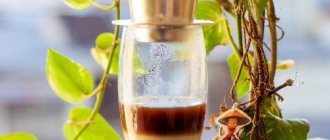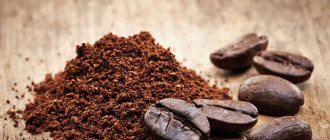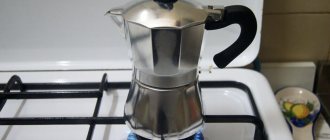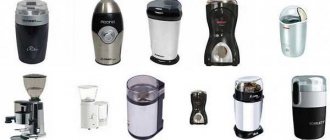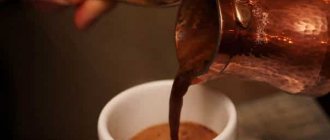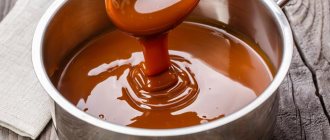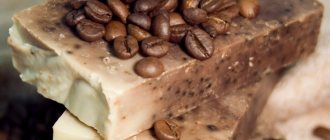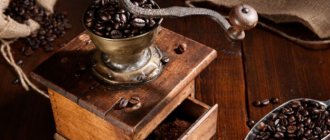What does coffee say?
This or that type of natural coffee makes you think about the following:
- which type of coffee (specific type of plant) produced the crop whose fruits you are now enjoying;
- how the best coffee beans were selected, what they should be in the opinion of the company that collected coffee on its plantations; how the collected coffee was dried and roasted;
- how experienced the coffee picker and processor (representatives of the same company supplying coffee) are in their activities;
- Other aspects and information that he considered necessary to communicate or at least make them known.
Testing (tasting, cupping) of different types of coffee for maturity and taste is a method used in the periodic assessment of the taste and aroma of coffee beans, units from a batch of which are taken to prepare a test portion of the drink. This action includes certain stages, ultimately providing a comprehensive sensory assessment. The most complete testing of coffee is also an attribute of economic benefit, the task of which is to select a coffee mixture that suits the tastes of even the most demanding coffee gourmet. This means that people trying it out adhere to all the manipulations, while at the same time bringing something of their own into the method.
Gustatory, visual, olfactory and tactile sensations are a set of information with the help of which any healthy person is able to tune in to some original and at the same time adequate idea of what real and high-quality coffee should be.
Exhaustive and most comprehensive testing of coffee quality is used by planters to determine the quality of freshly harvested coffee. The second intermediary is the processing company that performs drying and frying. In the end, a tender is held between different coffee suppliers - whoever wins in terms of quality is the first to enter the domestic market of those countries that are more interested than others in purchasing (and reselling on their territory) imported coffee. The competition is not held without a jury - real professionals in this matter.
Why cupping is carried out, or a little about the nuances of the profession
Cupping is important at every stage of coffee production: on the plantation, before exporting coffee, in the country of import, before, during and even after roasting.
Thanks to their senses and developed skills, tasters can determine not only the quality of the drink, but also the country of origin of the grain, how well the roasters did their job, and whether customers will like the drink. It is important to reject unsuccessful lots and give recommendations to the manufacturer. At the same time, it cannot be said that being a cupper is easy: specialists try many types of coffee every day, and should not miss any nuances in working with samples.
The market values specialists who are able to identify defects in green beans. They use mini roasters for quick roasting and hand grinders for grinding to get an idea of what the coffee will be like at every stage.
The profession of a taster, in addition to constant training, requires compliance with certain rules. First of all, it involves giving up smoking, using perfumes, eating spicy foods and strong drinks. High-class specialists even have to take out insurance for their tongue and nose. Its cost can be in the thousands of dollars, depending, among other things, on the fame of the coffee taster.
And despite the fact that modern equipment makes it possible to determine the chemical composition of coffee and many of its characteristics, a person still “costs” much more in this market.
Objectives of coffee tasting
The objectives of the tasting are as follows:
- Calculation of certain elements that allow the correct selection of coffee beans;
- Determination of probable violations committed during the cultivation of coffee plants and/or processing technologies for already harvested coffee;
- Designation of a complete picture of sensory criteria that allows you to choose the right coffee raw materials;
- Justification for the chosen decision: how good or bad the coffee is from one or another point of view of the taster, whether the coffee has exquisite taste characteristics;
- Recording the taken “indications” about the quality of coffee, the methods of the person testing it, visual, gustatory, tactile, “smell” (including using the back wall of the pharynx) and other equally important measures.
After all, if the buyer, in general, despite the high-quality taste and consistency of the coffee, is left with an unpleasant and bitter aftertaste, giving off a feeling of bitterness in the throat, it is unlikely that he will choose this variety and name (trademark of the roasting company), which this time he was let down.
Assessment of odor and aftertaste using the back of the throat is carried out after rinsing with clean water. The taster then takes another sip of coffee.
Tasters often conduct their coffee testing in a completely clean laboratory. The fact is that coffee is sensitive to any dust or dirt - it absorbs it like a sponge, and coffee ground into a fine powder itself creates a dust curtain that comes into contact with other liquids.
Conclusions:
- Cupping coffee is the process of evaluating its basic characteristics, smell and taste.
- There are cupping championships, it is held in large coffee shops, but you can do everything at home, it’s not difficult.
- Cupping technique: sniff dry coffee, pour boiling water, move the cap, sniff, pour a spoonful of the drink into your mouth, evaluate the taste and aftertaste. Repeat with cooled drink.
- All sensations are subjective. Everyone determines for themselves what notes are felt, what defects there are, whether they like it or not.
- Write down your feelings, this will help you choose the best coffee for you in the future.
Tasting options
The characteristics of the taste rating of coffee do not change:
- Dosage of coffee in a cup;
- “Fineness” of grinding;
- The temperature of the water in which the coffee will be dissolved;
- A dose that fits in one spoon;
- Roasting time;
- Specific concentration of coffee;
- Quality of lighting in the laboratory;
- Availability and quality of ventilation;
- Preservation of experimental grains in their original form;
Notes on the tasting are entered into the archive.
Professionalism of the taster
A person who tastes coffee has certain qualities: good memory and learning ability, constant adherence to the final principles, observance of all attributes of the coffee ceremony and the desire to maintain cleanliness. At the same time, he must have good public relations skills and communicate fluently in a second language, which will allow him to exchange experience and information with representatives of coffee companies from other countries. Most importantly, he has knowledge of all types of coffee grown in different countries and regions.
Exploring the wheel of coffee flavors and aromas
Members of the American Specialty Coffee Association developed the coffee flavor wheel pictured above. It can help describe the taste of any coffee. This wheel can be accessed while you are studying.
I do not recommend practicing without using it on the way to developing the ideal flavor palette. Thanks to this, you will be able to formulate exactly how you perceive the taste of the drink. In doing so, you will understand how many coffee professionals call the different flavors of the world's best coffees.
Over time, you will find that you are better able to tell the difference between cups of coffee, and you will be able to emphasize those aspects that make the drink special, that make it stand out. With a little effort, you will find that you have learned to better enjoy every cup of coffee. As long as your sense of taste is developed, you will soon rise to the level of many professionals in the industry.
Sensory Sensitivity Test
This test involves the following steps:
- Indistinguishability of tastes - the inability to distinguish bitter from sweet and sour from salty;
- Sensitivity to various tastes - a healthy person feels all taste sensations, even the weakest;
- By the difference in the depth of taste sensations - how much the subject will react to a weaker and stronger impulse, for example, from a salty-tasting stimulus.
- Distinction of odors, their intensity;
- Distinguishing colors from the full gamut that a healthy person perceives.
All steps are mandatory. If at least one of the points is not passed, such a potential taster will not be hired. Tasters should not exceed the limit on the list of samples being evaluated, which allows them to pass the test quickly and clearly without encountering differences. If the test (and the working assessment) included too many tested samples, the results are significantly distorted, because the brain of the specialist taster is fed up, he does not recognize the aroma and taste with the accuracy that is required of him.
How to correctly analyze the aroma of coffee?
The development of the sense of smell can affect the ability to perceive taste. Before you start tasting, you need to make sure that your nose is not stuffy and that you can breathe and smell freely.
Before you can recognize the aromas associated with coffee, you need to know the categories into which they are classified. Coffee odors can be divided into three main types:
Enzymatic origin
The coffee beans we roast are actually the seeds of a fruit similar to a cherry. Because of this, many types of coffee have a floral or fruit-like aroma. Such odors are called enzymatic, because they remind of the original plant from which the grains originated.
These aromas are quite varied: from cherry to citrus. There are even smells reminiscent of onions or melon. For example, many coffees from Latin America have a sweet, berry aroma, while coffee from Kenya is reminiscent of fruit pie. How many fermentative smells can you smell in your coffee?
Burnt sugar
The name of this category comes from the chemical reaction that occurs when amino acids and sugars are heated. These aromas may be reminiscent of roasted nuts or maybe even cocoa. Some of the smells in this category might make you think there's some baked goods being made somewhere nearby.
There are varying levels of burnt sugars in different types of coffee, but you will most likely be able to taste the aroma. The question arises: what type of smell comes from your coffee?
Originated during dry distillation
When coffee is roasted, the fibers of the beans are literally burned. This is what gives rise to the unique aromas that make you think of wood or maybe pipe tobacco. Some types of coffee taste like cloves or leather. These odors are produced by dry distillation during the roasting of coffee beans.
The flavors in this category become stronger at darker roast levels. This level of roasted beans takes longer to produce than light roasts. This means that there is more time required for the aromas to “eat into” the beans. Many people don't like these types of scents and think they have a burning smell. But try to think differently and associate them with pleasant smells that are found in everyday life.
Tasting process
There is no need to add milk, sugar, salt, or spices to coffee - they will distort the natural taste of coffee beyond recognition. The boiling water should be allowed to sit for at least 2-3 minutes - 100-degree water will simply destroy the original taste, aroma and consistency of the coffee; it may darken or, conversely, fade and become not quite what the original coffee should be. Freshly roasted and ground coffee is poured into a cup with water at a temperature of 87-93 degrees. The approximate proportion of coffee is 13 g per 240 ml of water, more precisely 12 g per 8 ounces.
Good coffee always produces sediment in the form of a layer that falls to the bottom of the cup. The rest, including soluble reagents, floats to the surface as a crust. Within 3-5 minutes it softens “on its own.”
Using a spoon, separate the water-soaked crusts into pieces. It is at this moment that the smell of coffee is sharpest and fullest in intensity. More than half of the crust should sink to the bottom. Any coffee grounds that have not fallen down are removed.
The taste and tactile review of freshly dissolved coffee is assessed most fully. A sip of coffee is taken so that the latter completely covers the tongue - if necessary, several chewing movements are performed, at this moment the presence of acids in the drink and the overall strength of the drink are determined. In the first minutes, the taste of coffee is most pronounced, until the receptors become dull; depending on the type of coffee and its quality, the taste should increase or, conversely, become weaker. Tasters do not swallow coffee: they have to take so many samples per day that if they drank it this way, the body would quickly be reminded of a caffeine overdose, which means that after tasting the coffee, it should be spit out, not swallowed. Particular attention should be paid to the aftertaste. When the freshly prepared coffee cools down a bit, say to 60 degrees, the test should be repeated.
Every type of coffee is prepared not in one, but in several containers. If a difference in taste and aftertaste is detected, a batch of freshly released coffee is considered to be non-uniform in terms of beans produced.
It is more expedient to analyze several types of coffee at once. This contributes to the development of taste memory in the taster, while the difference in taste and aroma is most noticeable, and such a person who tastes coffee gains good experience in his profession.
If there are a large number of samples between tasting sessions, the taster can drink some cool boiled water, or eat a small toast of white bread. Tasters are selected based on sensory memory testing.
Features of the capper profession
A cupper is a professional coffee taster who knows in detail the history, types of varieties, and brewing methods. He is also required to understand such complex categories as taste, smell, composition and color.
It would seem that what could be better than a job that allows you to constantly enjoy a flavorful drink and get paid for it. However, the profession has many features. The taste buds of a capper must remain sensitive, so a person of this profession should not smoke, drink alcohol, very spicy, salty, sour or sweet foods, or use perfume.
Such strict measures are justified by the working conditions: the cupper has to examine every day the barely noticeable shades of taste and smell of different types of coffee. Sometimes a professional taster can “taste” more than several hundred different varieties in a day.
Correct evaluation of coffee
In addition to general human indicators at the brain level, such internal qualities of a person as his mentality can play an important role. The laboratory should be protected as much as possible from outside irritants; the organizers of the tasting companies will be located in advance in a place free from noise pollution and other distracting factors, such as, for example, loitering of visitors; the territory of the laboratory is completely guarded.
Factors influencing the correct assessment of coffee by a taster:
- The smell of toothpaste that was recently used to clean the mouth; cosmetics and perfumes used by the taster. Both of these irritants will distort the taste and smell of coffee beyond recognition.
- Time: from 10 to 12 (after breakfast) and from 16 to 18 (after lunch) local time. It is at this moment that the brain experiences a peak of activity, which is used in the interests of performing the work functions and responsibilities of a particular employee - the stomach stops working, and the nutrients obtained from food are sent through the bloodstream to the brain, which needs to work intensively.
- A sufficiently illuminated laboratory room can enhance and highlight the fullness of color perception of the studied samples of freshly imported coffee. But too much illumination, for example, in direct sunlight, is also not recommended: the sun also gives a yellowish tint to the rays, and what is needed is white light, close to daylight in the shade.
- The room temperature of the laboratory is 20...25 degrees Celsius. Higher or lower already significantly affects the overall perception of the taster.
- Relative humidity should ideally be 60%.
- The taster should not smoke or drink alcohol! Alcohol and tobacco substances are reagents that significantly spoil the taste and smell of coffee when tasting it. A “smoked” and “alcoholized” tongue and throat are no longer friends of the taster, but factors that interfere with the latter. Even if you have consumed alcohol and tobacco periodically, before applying for a job as a taster, such a candidate needs to thoroughly cleanse the body of these harmful inclusions and, in general, become extremely healthy.
Q graders or professional cappers
Coffee companies always have tasters on staff. Some of them receive a special certificate from the Coffee Quality Institute. The Institute appeared in 1996, and one of its tasks was the development of uniform standards for quality and evaluation of coffee (QSystem). This allows specialists to speak the same language, and farmers to receive greater profits for grain. With the advent of QSystem, courses for Q-graders – professional “evaluators” of coffee – appeared. The first certification was carried out in the USA in 2004; today the program operates in 58 countries around the world. The certificate is difficult to obtain, but it is the “gold standard” in the profession.
Q graders usually work directly on plantations and evaluate the taste of coffee using a 100-point system. When buying coffee from international companies Falcon, Nordic and Sucafina, we focus specifically on the evaluation indicator. It must be 80 points and above. In this case, coffee belongs to the specialty category. Our suppliers' teams have certified Q-graders; they themselves sort and select the best lots of coffee, so we can be 100% confident in the quality and level of grain that comes to us in St. Petersburg.
Cupping cup and spoon requirements
The cup must be porcelain, earthenware or ceramic (and not glass, wood, plastic or metal). The fact is that porcelain itself is pleasant when you touch the edge of the cup to your lips, and also does not conduct heat unnecessarily - this is important, because the water will not have time to cool below 87 degrees, necessary for infusing coffee that has just been poured into hot water.
The preferred form factor of a coffee cup is precisely in the form of a tulip. The base of the cup is widened at the bottom and narrowed at the top - and not vice versa, as with most mugs, cups or glasses.
It is advisable to use a spoon of an asymmetrical shape, wide in itself and not so deep that the drink cannot be seen. But a significant part of professionals use ordinary ceramic or metal-ceramic spoons.
Glossary of common coffee flavor terms
This dictionary mainly includes terms used in tasting, rather than all coffee-related concepts. Let's take a look at the most common words used to describe the taste of coffee. Thanks to them, you can maintain a conversation on the topic of coffee.
- Acrid is a sharp, sour taste that is sometimes described as pungent or astringent.
- Ashy is a smell that usually comes from dark roasted coffee. This aroma is reminiscent of an ashtray or fireplace.
- Bag odor refers to coffee that has been stored too long or light roast coffee beans that taste and smell like mold.
- Baked - simple, boring, unremarkable coffee.
- Bitter is a sharp, sour, even unpleasant taste, which is most often felt at the root of the tongue.
- The bouquet is the aroma of freshly ground coffee.
- Bread - coffee with a grain aroma that is reminiscent of the smell of bread. Usually comes from sour coffee or coffee beans that have not been roasted enough.
- Bright - coffee with a pleasant, sharp taste.
- Salty – A salty taste in coffee can come from reheating or from the coffee being roasted for too long.
- Caramel - A taste or aroma that is similar to candy or syrup, like caramelized sugar.
- Charcoal - A taste or aroma that is reminiscent of burnt food or wood. These flavors are typically found in darker roasted coffees.
- Chicory is a spice that is added to coffee to enhance the taste or used as a substitute for this drink.
- Chocolate - a taste or aroma that is reminiscent of chocolate.
- Citrus - taste or aroma like citrus fruit. This taste often appears in coffee, because coffee beans come from the fruit of the coffee tree.
- Earthy - The aroma of fresh earth or moist soil. Can have both positive and negative connotations. Most often this word is used to indicate the content of various types of mold.
- Enzymatic - sour or onion-like taste. It comes from coffee that has been stored and fermented for too long.
- Floral - The aroma of fresh flowers that can be detected in coffees with a fruity or spicy taste or smell.
- Fruity - an aroma or taste similar to different types of fresh fruit.
- Herbal - aroma similar to freshly cut grass. Typically comes from beans that have been under-roasted or damaged by water.
- Spicy - aroma similar to freshly cut grass and spices. Usually comes from grains that were not dried well enough during processing.
- Leather - a scent similar to leather. It can often be found in coffees of East African origin.
- Malty - The aroma of malt or wheat, similar to freshly baked bread.
- Mild is a balanced, medium-strength coffee that does not have strong flavors or aromas.
- Nutty - aroma similar to nuts. When this word is used, it means fresh nuts, not bitter or spoiled nuts.
- Onion - taste reminiscent of onions. Typically occurs when coffee beans are processed using the wet method using standing water.
- Papery is a taste that occurs in coffee due to storing or grinding beans in paper bags or using low-quality filters to brew the drink.
- Unripened - tastes similar to peanuts. Usually appears on unripe coffee beans.
- Rubbery is an aroma or taste typically found in fresh Robusta coffee. This refers to the taste or aroma of hot tires or rubber bands.
- Burnt – Coffee that has been roasted to the point of being burnt. This can occur if the roasting temperature is too high or if the beans do not move much during the roasting process.
- Sour is an unpleasant, harsh taste that can be found in coffee.
- Pungent - a smell or taste that is reminiscent of cloves, cinnamon and other spices.
- Tobacco - the smell or taste of fresh tobacco. This word does not always have a negative connotation, and this flavor or aroma is found in many coffees from around the world.
- Winey is a combination of taste, smell and mouthfeel that is reminiscent of wine.
- Woody - the taste and aroma of old coffee.



